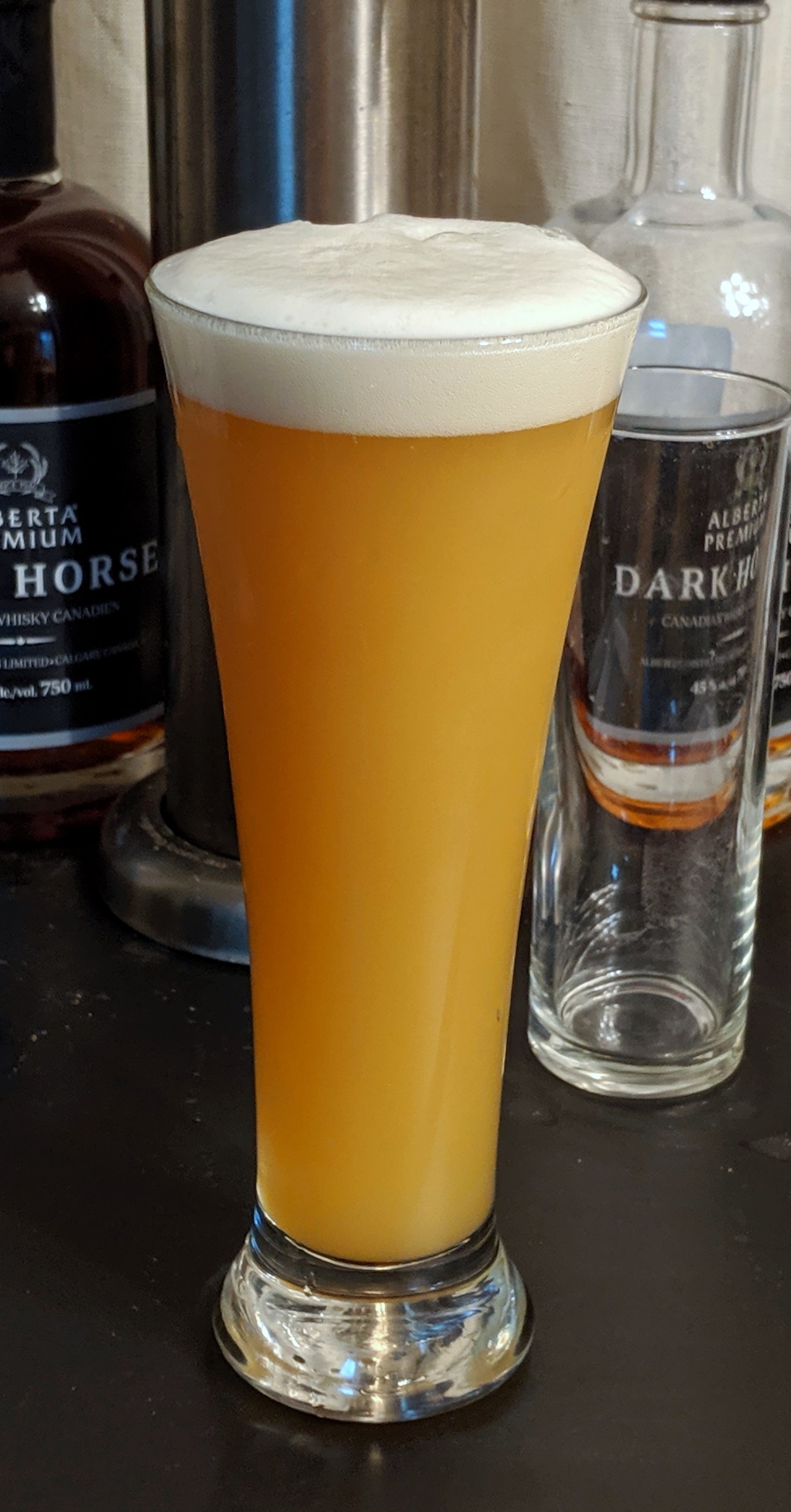NEIPA Grists
The New England IPA has been a pretty controversial style in the brewing world, but at this point it seems, at least to me, that it is here to stay and isn’t going to be a flash-in-the-pan style that fades to relative obscurity like a bunch of other IPA variants like brut IPA, black IPA, red IPA, brown IPA, and others. That said, actually brewing it still seems to be an area of confusion for a lot of homebrewers. Unsurprisingly, as a massively hop-forward style, there are a lot of different approaches to hop selection, hopping rates, and hopping schedules in NEIPA, so this is not what I’m going to talk about; instead, I’m going to give a basic overview of composing a NEIPA grainbill.
What NEIPA Isn’t
Before I get into the details of makin’ haze, I think it is important to clear up a couple misconceptions. NEIPA is not characterized by a bunch of yeast in suspension and it most definitely does not contain flour in the mash. Not to put too fine a point on it, but the yeast from a NEIPA fermentation tastes bitter, harsh, and awful - not what you want in your glass. Further, yeast will drop out pretty quickly in cold storage, so even if you enjoy the flavour of yeast, your haze stability will be poor. The flour thing is just terrible brewing. It gums up your lauter and if the fine particulates don’t get sufficiently crashed, filtered, or centrifuged out, they’ll drop to the bottom of the keg or bottle and, at best, leave a bunch of doughy junk in your vessel, and at worst, clog your keg. If you encounter a recipe with flour, my advice would be to simply disregard it because clearly that brewer does not know what they are doing when it comes to brewing NEIPA.
What NEIPA Is
What characterizes NEIPA is actually remarkably hard to pin down. It’s hazy, yes, but is it nearly opaque or fairly translucent? How high is the finishing gravity? How heavy on the palate? There are a lot of different perfectly valid answers to these questions, but we can still establish a general framework. NEIPA usually contains a malt bill that is relatively reserved flavour-wise so that the hops can shine more. NEIPA also usually has a relatively high protein and beta-glucan content to provide a soft and full mouthfeel, which also has the side effect of, in combination with an aggressive hopping regime, creating a very hazy beer.
The Ratio
The basic formula for a typical NEIPA grain bill is 70-80% base malt and 20-30% what I think of as thickening grains - grains that have higher levels of protein and beta-glucans to give that NEIPA mouthfeel; of course, some brewers brew NEIPAs that have grists basically identical to that of a hefeweizen and some use much lower levels of thickening grains, but most good NEIPAs will fall in or just outside of this range. Speciality malts are usually not really present besides possibly a splash of something like honey malt or a little light-coloured crystal, but this is a very individual thing, whereas the general ratio is mostly true across the board.
Base Malt Selection
Some people use pilsner malt, some people use Maris Otter, Golden Promise has a lot of fans, and some people use whatever 2-row is cheapest. You can make good haze with all of these, so choose your favourite. Just make sure that you have sufficient diastatic power to convert your mash if your thickening malt choice is something like flaked wheat that does not have any diastatic power.
Protein Malts
This is where NEIPA grist discussions often adopt a nearly religious tone. The most common choices are: malted wheat, flaked wheat, flaked oats, malted oats, and chit malt (an undermodified barley malt). In theory you could also use flaked/malted rye or flaked barley, but these are far less common selections. There are some technical brewing chemistry-related reasons to choose some of these over others - oats for instance have a higher manganese level than the other choices, which accelerates oxidation, but the reality is that you can brew good haze with all of them. If your process is very good at keeping oxygen out, brewing with 30% flaked oats can make good haze just like brewing with 30% malted wheat. I personally like 15% chit paired with 15% malted wheat, but 20% malted wheat, 15% flaked oats/15% malted wheat, 30% flaked oats, and lots of combinations therein make good haze too.
The Mash
NEIPA works just like any other beer - if you want a higher FG, mash hotter. Mashing at 70C/158F will net you a high FG with a lot of retained sweetness. Mashing at 64C/147F will give you a lighter, drier beer. My suggestion? If you want that heavy rich milkshake IPA-esque mouthfeel, go all the way to 70C/158F, but I like my NEIPAs over-the-top heavy - if I want crispy, I go for a WCIPA or pilsner.
Conclusion
Like most styles, there’s no “one true recipe” for NEIPA. There’s a lot of leeway in the style and a lot left up to brewer interpretation, but hopefully this gives a good jumping off point for NEIPA brewing. It also hopefully result in less flour NEIPAs. Please, no more flour in NEIPA. I get enough flour in my sink from baking, I don’t need more from dumping out bad NEIPA.
